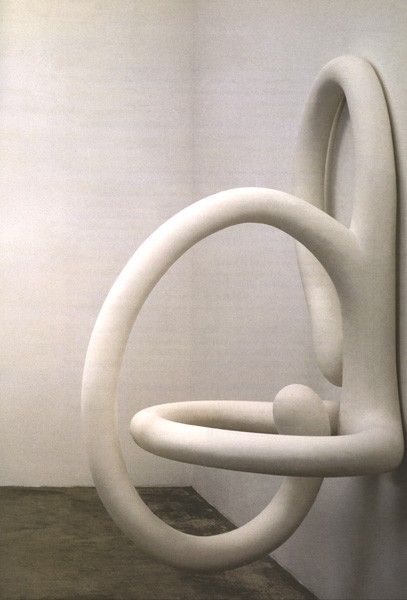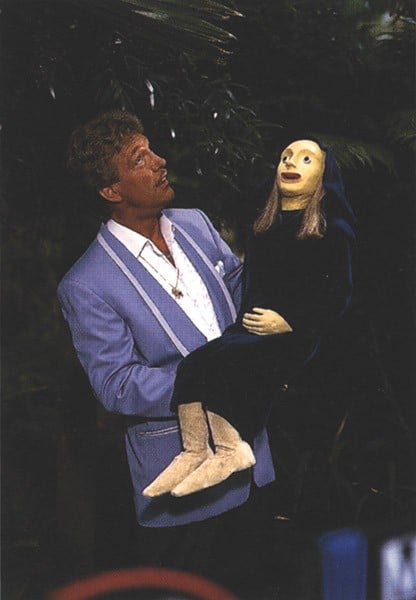


The variety of Asta Gröting’s sculptures and films makes a bizarre and eclectic impression at first. Though distantly and coolly presented, as statements about volumes in space, they refer to so many different subjects that finding an underlying theme seems an impossible task. She works with ‘baumkuchen’ (pyramid cake), Brazil nuts, conveyor belts, glass, rubber and ready-made leather jackets to give shape to both abstract and concrete sculptures. Nonetheless, behind themes ranging from shells via bottles, vases and animal entrails to the Leather Jacketsseries, one discovers the study of the principles of form, an investigation coherent in terms of content, and moreover part and parcel to a time-honored sculptural tradition. That interest is directed towards the very hand of the sculptor, the mould, the source, and towards the changing of the form.
Gröting searches, for the most part, in non-static principles. After having worked for a number of years with conveyor belts, which initially resulted in introverted, somewhat formal sculptures, in around 1990 she found a connection with transport systems within the human body: hence the glass intestines of a shark came into being, and of a herbivore, sometimes enlarged to sculptures of more than three meters in length. Along with human entrails in rubber and silicone, she also made a five-meter long oesophagus that hangs in space like a giant, pink rubber tunnel. Other ‘internal organs’ like the inner ear system (Orientation Device) that gives us our sense of balance, become autonomous sculptures which have a beauty of their own, even for those who have no idea of their physical source. All these sculptures, once they are realized, have a static character, in fact, and demonstrate their changeability only through the altering daylight and the moving eye of the viewer. In her recent choreography for skaters, which was shown on large-screen video, an interest in motion and speed is detected, as sources of all changes in form, relating to the work of Eadweard Muybridge. What links the filmic images directly to her sculptures, is her basic interest in the artistic principles that are the conditions for sculpture: static versus dynamic, the concepts of balance and equilibrium and the play with gravity. Here the Orientation Device points to the various typologies of the skaters. The immobile black bear, which like a cumbersome and closed volume, simply licking its pail of honey dry, the duo reminiscent of a Gilbert & George performance who start out over and over again only to fall flat on the ice each time, the flowing movement of a female skater in a long dress and long pink rubber gloves, and the centrifugal force of the virtuoso turning pirouettes, these are for Gröting sculptures in motion that appear to be saying that if the viewer isn’t going to move around the sculpture, then the sculpture will set itself in motion of its own accord.